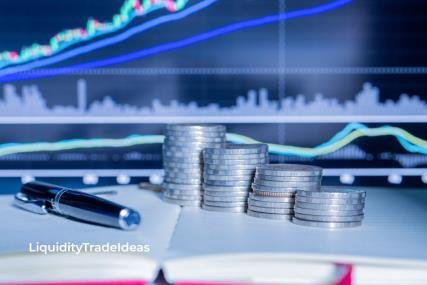Technical analysis is a method for predicting future price movements of financial instruments by studying past price data. It assumes that historical price data contains all relevant security information and that patterns and trends that have occurred are likely to repeat in the future.
Basic Concepts of Technical Analysis
- Price Action: The movement of prices over time, often visualized through charts.
- Support and Resistance: Price levels where buying or selling pressure is expected to be strong.
- Trend Lines: Lines drawn to connect a series of price points, indicating the direction of the trend.
- Patterns: Recurring chart formations that can signal potential price movements.
Chart Types
- Line Charts: Connect closing prices to show the overall trend.
- Bar Charts: Show the open, high, low, and closing prices for each period.
- Candlestick Charts are similar to bar charts but provide more visual information, including the body (the difference between open and closed) and shadows (the highs and lows).
Technical Indicators
- Moving Averages: Smooth out price fluctuations to identify trends.
- The Relative Strength: Index (RSI) gauges how quickly and how much a price has changed in order to determine if it is overbought or oversold.
- Moving Average Convergence Divergence (MACD): Compares two moving averages to identify trend changes and potential reversals.
- Bollinger Bands: Envelopes around a moving average that indicate volatility.
Common Chart Patterns
- Head and Shoulders: A reversal pattern indicating a potential trend change.
- Double Tops and Bottoms: Reversal patterns that suggest a change in direction.
- Triangles: Consolidation patterns that can lead to a breakout in either direction.
- Flags and Pennants: Continuation patterns that suggest continuing the existing trend.
Technical Analysis Tools and Software
- Trading Platforms: Provide charting, analysis tools, and order execution capabilities.
- Online Resources: Offer free or premium technical analysis tools and education.
Advantages and Disadvantages of Technical Analysis
- Advantages: Based on historical data, objectives can be used with various financial instruments.
- Disadvantages: It relies on past patterns, can be influenced by market sentiment, and may not always accurately predict future price movements.
Combining Technical and Fundamental Analysis
While technical analysis focuses on price action, fundamental analysis considers factors like company earnings, economic indicators, and industry trends. A more thorough understanding of the market may be obtained by combining the two methods.
Conclusion
Technical analysis is a valuable tool for traders and investors who want to make informed decisions in the financial markets. By understanding the basic concepts, chart types, indicators, and patterns, you can develop a solid foundation for your technical analysis strategy. However, it’s important to remember that technical analysis is not foolproof and should be used with other factors to make well-rounded investment decisions.
FAQs
- Is technical analysis suitable for all types of investors? While it can benefit various investors, it may require more time and effort for those who are new to the markets.
- What are the key factors to consider when choosing technical indicators? The choice of indicators depends on your trading style and investment goals. Some factors to consider include the time frame you’re analyzing, the type of asset you’re trading, and your risk tolerance.
- Can technical analysis be used for long-term investments? While technical analysis is often associated with short-term trading, it can also be used for long-term investments by identifying long-term trends and support and resistance levels.
- How can I improve my technical analysis skills? Practice is vital to becoming proficient in technical analysis. You can start by analyzing historical charts, experimenting with indicators, and backtesting your strategies.
- Is the technical analysis based on emotions or logic? Technical analysis is primarily based on logic and objective analysis of price data. However, it’s essential to avoid letting emotions influence your trading decisions.






